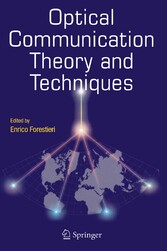Search and Find
Service
QUANTUM-AIDED CLASSICAL CRYPTOGRAPHY WITH A MOVING TARGET (p. 53-54)
Fabrizio Tamburini1,3, Sante Andreoli2, and Tommaso Occhipinti1,
1 Dept. of Astronomy, University of Padova, vicolo dell’Osservatorio 2,I-35122 Padova, Italy.
2 Magneti Marelli Holding S.p.A., Motorsport.
3 Department of Information Engineering, University of Padova, via Gradenigo 6/B, I-35131, Padova, Italy.
Abstract: We propose an encryption method obtained combining low-light optical communication, in the limit of quantum key distribution (QKD) techniques, and classical cryptography with pre-shared key. We present a toy-application to the telemetric data transmission Formula 1 racing. Key words: optical communication; secure communication; cryptography; quantum cryptography.
1. INTRODUCTION
The recent method proposed to create and distribute securely a quantum encryption key to send secure messages takes its vital inspiration from the basic laws of quantum mechanics. Quantum cryptography started with the studies by Bennett and Brassard in 1980s and by Bennett in 1992 [1,2] as a new method for generating and distributing secure cryptographic keys using the properties of Quantum Mechanics. In contrast to existing methods of classical key distribution (CKD), quantum key distribution, QKD bases its security on the laws of nature. The impossibility of cloning or measuring a quantum state without inducing an irreversible collapse of its wavefunction ensures the build-up of a secure encryptographic key distribution between two parties. For a review see e.g. [3]. Similar experiments [4, 5] illustrated the feasibility of quantum encryption in practical situations.
Free-space QKD was first realized [6,7] over a small distance of 32 cm only with a point-to-point table top optical path, and recently improved in atmospheric transmission distances of 75 m [8] in daylight and 1 km [9] in nighttime over outdoor folded paths, where the quanta of light were sent to a mirror and back to the detector. A daylight quantum key distribution had been realized over a distance of 1.6 km by Buttler et al. [5]. Recently Aspelmeyer et al. realized a quantum key distribution over the Danube using entangled photons [10]. Several groups have also demonstrated QKD over multi-kilometer distances of optical fiber [11–17] and recently realized a version of the experiment "in the real world", in which Alice and Bob were connected with 1.45 km of optical fiber sharing entangled photons.
The average raw key bit rate was found to be about 80 bits/s after error correction and privacy amplification. idQuantique, MagiQ technologies and NEC realized commercial applications of secure quantum key distribution [18–20]. MagiQ technologies guarantee, for example, a fast-generating quantum key rate of 10 keys per second. The field is now sufficiently mature to be commercially implemented and to be a tool in fundamental research beyond the foundations of quantum mechanics and basic physics [21,22].
2. QKD TO UPDATE A "MOTHER KEY"
In this paper we suggest a simple procedure to aid the classical cryptographic methods with Quantum Cryptography, when the environmental conditions and/or the requirements of obtaining a long key in a short time strongly play against QKD. This procedure will increase, time-by-time, with the onetime- pad methods of Quantum Cryptography, the global security of the scheme. This method was studied to improve the security of bi-directional telemetry of race cars in view of possible, future, quantum computer attacks.
A classical cryptographic scheme can be reduced to three main quantities:
m the message, k the key and c the code, with the corresponding random variables M, K and C that describe their statistical behaviours. The encoding C = Code(M,K) and the decoding M = Dec(C,K) are suitable deterministic processes which are described by a set of instructions that require a computational effort that depends both on the length of the cryptographic key and on the chosen protocol. Even if modern classical encryption protocols, based on the computational complexity of their encoding algorithms, still resist to the attacks made with nowadays technology, they will become vulnerable in the next future to the attacks of quantum computers, e.g. with Shor’s algorithm (for a review, see [23]).
This problem will be avoided with a fast-generating QKD scheme that will change the key with a rate much faster than the computational time needed to break the code, without giving enough time to the cracker to get the encoded information. In environmental conditions with high bit error rate the application of this procedure will become more and more difficult giving more chances to the cracker to break the code.
All prices incl. VAT













